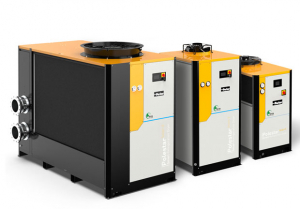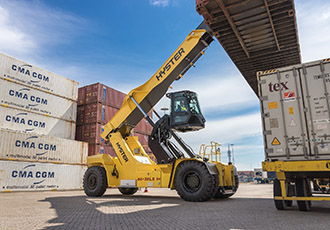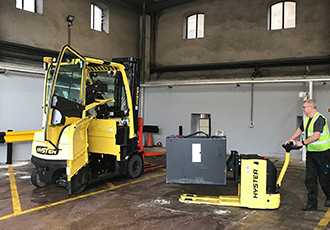Preventative Maintenance, Training and Spare Parts Improve Productivity and Profits
14th November 2008
Source:
ATM Automation Limited
In these challenging times manufacturers face continuing pressure to improve output and reduce costs. In an effort to achieve these objectives many companies are turning to preventative maintenance as a way of improving the performance of their automation and robotic systems. As a systems solution provider to the plastics industry ATM Automation Limited explain in this article, the benefits which can be obtained from scheduled and preventative maintenance.
Unexpected breakdowns and the subsequent downtime associated with a robot or system failure can have a drastic effect not only on productivity but also on profitability. Preventative maintenance is the single most important thing you can do to avoid problems with your robot system or automation. By adhering to a well structured preventative maintenance plan you will identify potential problems before they become serious, improve productivity, save money, not to mention extending the useful life of the equipment and have a much improved MTBF(meantime between failures).
With the benefits of preventative maintenance apparently so obvious, it is surprising to discover that some companies ignore the subject as it is perceived as taking time and costing money. With most maintenance procedures being performed with the robot or system shut down, these breaks in the production schedule are mooted as being disruptive. The reality is however that the unplanned stoppages, which will eventually result due to lack of preventative maintenance, are almost always longer and therefore more costly in terms of lost production and lost profits.
Preventive maintenance should follow a set schedule which should be tailored to suit the equipment within the cell and the application to which it is being applied. For example, robot or automation cells which are performing simple pick and place operations will have much more basic preventative maintenance schedules than a complex system which incorporates several different technologies or processes, which may require inspection at several points in a single shift.
Robots come in many different shapes and sizes from basic “Sprue Picker” units through 3 Axis Cartesian Robots to highly sophisticated 6 and 7 Axis Robots. The scheduled maintenance programme should include any recommendations from the specific robot manufacturer. Schedules are usually based on time intervals or production usage. The most basic preventative maintenance tasks are those which should be carried out daily or at the start of each shift. Simple checks on the condition of cables and harnesses, checks on lubrication levels, the integrity of cell guarding and a general review of the working area although basic, can often highlight items which if left unattended could result in serious failure or safety issues. Where robots are operating within more complex automation cells, additional checks should be added to the daily schedule. These will be specific to the other components within the system, such as conveyors or parts feeders, and all checks should be in line with the original manufacturer’s recommendations.
In addition to the basic Daily or Shift checks, a comprehensive preventative maintenance programme will include Weekly, Monthly, Quarterly and Yearly checks for all elements of the automation cell. Whilst the Daily, Weekly and Monthly checks are often handled easily by customers own in house maintenance teams, the Quarterly and Yearly checks are often undertaken by ATM’s field service team. Quarterly and Yearly preventative maintenance and service schedules are more comprehensive and can sometimes include tasks which may require specialist tools, equipment or knowledge. Maintenance and service at this level, by an experienced ATM service engineer, will ensure that the robot and any associated equipment remains operational and highly efficient. At the end of this type of maintenance and service visit, the service engineer will compile a report for the customer confirming the maintenance procedures which have been carried out. In addition, the engineer will provide a separatel report recommending remedial actions for any item deemed to be in need of attention or replacement to avoid failure in the future.
The adoption of a comprehensive Preventative Maintenance and Service programme will undoubtedly improve the mean time between failures (MTBF) and improve production output. However, another important contributing factor to robot and system efficiency is the mean time to repair (MTTR). Although the potential for unexpected breakdowns is greatly reduced by following a well defined preventative maintenance programme, when the inevitable does happen, it is essential to get the system back into production as quickly as possible. ATM Automation prides itself on its rapid response to customer calls for service support, however, the customer can have a significant and immediate influence on the mean time to repair by ensuring the availability of properly trained personnel and spare parts.
ATM can, as part of a range of preventative maintenance and service agreements, specify front line and essential spare parts for robot systems and automation cells. Depending upon the complexity of the system, essential spares may include basic items such as Fuses, Relays, Cables and Lamps or more comprehensive items such as Motors, Drives, Control Boards and Bearings etc. ATM also offer a series of Operator and Maintenance training courses which are tailored to suit the type of robot and system used by the customer.
As preventative maintenance and service schedules are pre-planned, they can be timed to ensure minimal disruption to production schedules. Well trained operators and maintenance personnel will also minimise downtime by adhering to the planned schedules, and also spotting potential problems before they become a serious threat to production or safety. The resultant benefits of this combination are a much improved meantime between failures (MTBF), and reduced mean time to repair (MTTR), especially in cases where front line spare parts are available. The investment in a comprehensive preventative maintenance plan, training for operators and maintenance personnel and availability of front line spares for your robot system and automation will ensure high uptimes, high productivity and more profit.
With the benefits of preventative maintenance apparently so obvious, it is surprising to discover that some companies ignore the subject as it is perceived as taking time and costing money. With most maintenance procedures being performed with the robot or system shut down, these breaks in the production schedule are mooted as being disruptive. The reality is however that the unplanned stoppages, which will eventually result due to lack of preventative maintenance, are almost always longer and therefore more costly in terms of lost production and lost profits.
Preventive maintenance should follow a set schedule which should be tailored to suit the equipment within the cell and the application to which it is being applied. For example, robot or automation cells which are performing simple pick and place operations will have much more basic preventative maintenance schedules than a complex system which incorporates several different technologies or processes, which may require inspection at several points in a single shift.
Robots come in many different shapes and sizes from basic “Sprue Picker” units through 3 Axis Cartesian Robots to highly sophisticated 6 and 7 Axis Robots. The scheduled maintenance programme should include any recommendations from the specific robot manufacturer. Schedules are usually based on time intervals or production usage. The most basic preventative maintenance tasks are those which should be carried out daily or at the start of each shift. Simple checks on the condition of cables and harnesses, checks on lubrication levels, the integrity of cell guarding and a general review of the working area although basic, can often highlight items which if left unattended could result in serious failure or safety issues. Where robots are operating within more complex automation cells, additional checks should be added to the daily schedule. These will be specific to the other components within the system, such as conveyors or parts feeders, and all checks should be in line with the original manufacturer’s recommendations.
In addition to the basic Daily or Shift checks, a comprehensive preventative maintenance programme will include Weekly, Monthly, Quarterly and Yearly checks for all elements of the automation cell. Whilst the Daily, Weekly and Monthly checks are often handled easily by customers own in house maintenance teams, the Quarterly and Yearly checks are often undertaken by ATM’s field service team. Quarterly and Yearly preventative maintenance and service schedules are more comprehensive and can sometimes include tasks which may require specialist tools, equipment or knowledge. Maintenance and service at this level, by an experienced ATM service engineer, will ensure that the robot and any associated equipment remains operational and highly efficient. At the end of this type of maintenance and service visit, the service engineer will compile a report for the customer confirming the maintenance procedures which have been carried out. In addition, the engineer will provide a separatel report recommending remedial actions for any item deemed to be in need of attention or replacement to avoid failure in the future.
The adoption of a comprehensive Preventative Maintenance and Service programme will undoubtedly improve the mean time between failures (MTBF) and improve production output. However, another important contributing factor to robot and system efficiency is the mean time to repair (MTTR). Although the potential for unexpected breakdowns is greatly reduced by following a well defined preventative maintenance programme, when the inevitable does happen, it is essential to get the system back into production as quickly as possible. ATM Automation prides itself on its rapid response to customer calls for service support, however, the customer can have a significant and immediate influence on the mean time to repair by ensuring the availability of properly trained personnel and spare parts.
ATM can, as part of a range of preventative maintenance and service agreements, specify front line and essential spare parts for robot systems and automation cells. Depending upon the complexity of the system, essential spares may include basic items such as Fuses, Relays, Cables and Lamps or more comprehensive items such as Motors, Drives, Control Boards and Bearings etc. ATM also offer a series of Operator and Maintenance training courses which are tailored to suit the type of robot and system used by the customer.
As preventative maintenance and service schedules are pre-planned, they can be timed to ensure minimal disruption to production schedules. Well trained operators and maintenance personnel will also minimise downtime by adhering to the planned schedules, and also spotting potential problems before they become a serious threat to production or safety. The resultant benefits of this combination are a much improved meantime between failures (MTBF), and reduced mean time to repair (MTTR), especially in cases where front line spare parts are available. The investment in a comprehensive preventative maintenance plan, training for operators and maintenance personnel and availability of front line spares for your robot system and automation will ensure high uptimes, high productivity and more profit.
Similar articles
More from ATM Automation Limited
- ATM Automation & ILPRA Combine Experience for PPMA 2009 18th August 2009
- ATM Automation & ILPRA Package Their Skills 11th August 2009
- ATM Cartesian Robots – Still a Major Player in Plastics 6th February 2009
- Preventative Maintenance, Training and Spare Parts Improve Productivity and Profits 14th November 2008




.jpg)







Write a comment
No comments